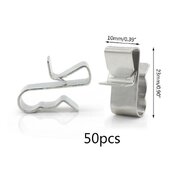ksmithaz1
Solar / EV Junkie
Lubricant and rubber compatibility (something all guys should be familiar with). There are many different materials.
I would be concerned WD-40 might dissolve seals.
I have a particular grease for use with seals on pool pump.
Silicone lubricants are also only for some seal materials. I was reviewing a recommendation for field maintenance, when the factory material wasn't readily available. Because the program had assigned its own part numbers, was more difficult to track down manufacturer data. But turned out to be a silicone lube being considered, and the device had silicone O-rings. Those were NOT compatible.
Scowl, yea, generally in my experience silicone lubricants are better for most cheap o-rings, but I find it interesting that a silicone based lubricant would not be suitable for a silicone O-ring. Plastics on cars are generally fairly tolerant of most oils, but the problem with alcohol based fuels comes to mind. A lot of the automotive seals around connectors went to an orange waffle stuff a while back. I'm guessing the chinese built MC-4 is not using anything esoteric, probably ABS with an off-the-shelf silicone o-ring. Maybe we should try KY Jelly?




